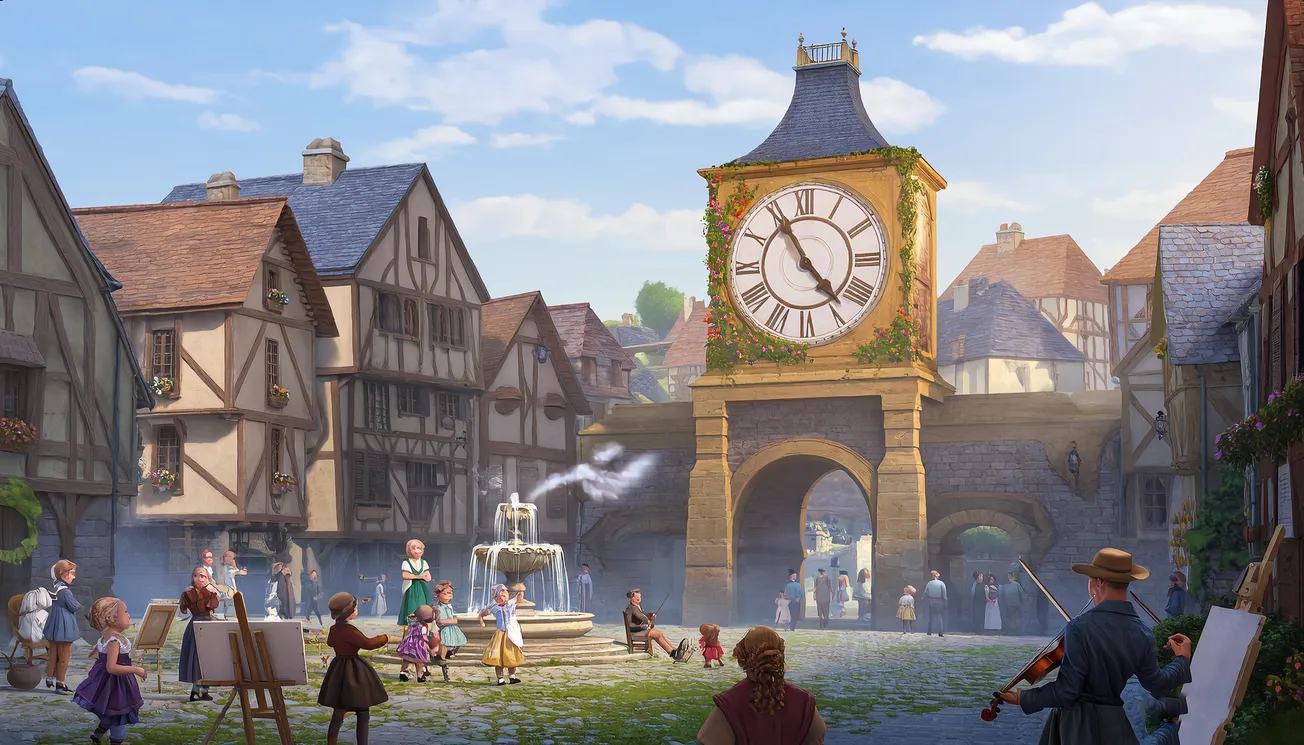In the village of Hemsley-on-Hush, time was everything.
The villagers prided themselves on their precision. Breakfast at 7:01. Work at 8:00 sharp. Tea at 3:15, two biscuits each. Even laughter had a time slot on Thursdays.
And above it all, quite literally, stood The Great Clock—a towering bronze timekeeper whose tick echoed through the cobblestones like a heartbeat. It had never stopped. Not once.
Until one Tuesday morning, it did.
No chime. No tick. No tock.
Just silence.
When the villagers looked up, they gasped. The clock’s hands were gone. Not frozen—gone. As if plucked clean by invisible fingers.
Panic brewed like over-steeped tea.
The mayor called an emergency meeting at precisely… well, that was the problem. No one knew when.
“We must fix it!” cried Mrs. Everhart, who hadn’t missed a bus in 47 years.
“We’re doomed!” whimpered Mr. Cluckston, who scheduled his emotions.
But old Mr. Mabbott, who had long stopped wearing a watch, just sipped his tea and said, “Or… we’re free.”
At first, there was chaos. Meetings were missed. Eggs were overcooked. The bakery opened late—late!—and the townsfolk nearly wept over their unsynchronized scones.
But slowly, something curious happened.
People began to wander.
Children lingered in the park. Shopkeepers talked to customers like time wasn’t running out. A teenager who’d always rushed home to practice violin just… played in the square. Passersby stopped to listen.
A woman stopped measuring her walks in steps and started measuring them in birdsong.
The baker began experimenting. Lavender shortbread. Cardamom twists. “No time to try new things,” he used to say. But now—what was time?
Even the mayor, after a few shaky weeks, stopped checking his pocket watch every seven minutes and took up painting. Badly, but joyfully.
Weeks passed. Still no clock hands.
And then, one morning, a little girl named Liddy climbed the clock tower. She’d always wanted to. No one had ever thought to stop her—until now, when no one was keeping track.
Inside, she found something remarkable.
Where the hands once turned, there was now a garden.
A garden. Inside the clock.
Vines curled around the gears. Wildflowers burst from the metal casing. Time, it seemed, had decided to grow something instead of count.
At the center of it all, resting gently on a bed of moss, was a new face for the clock. Not numbered. Not marked.
Just a smooth circle. And in tiny letters, written around the edge:
“Now is always enough.”
The village never did replace the clock hands.
Some said the tower had finally gotten tired. Others said it had simply woken up.
But from that day forward, the villagers of Hemsley-on-Hush stopped asking “What time is it?” and started asking “How does it feel?”
And somehow, everything was right on time.
✨ Next: The Librarian of Lost Thoughts
🏛 Back to: Fables for the In-Between
⬅️ Previous: The Tower of Almosts

